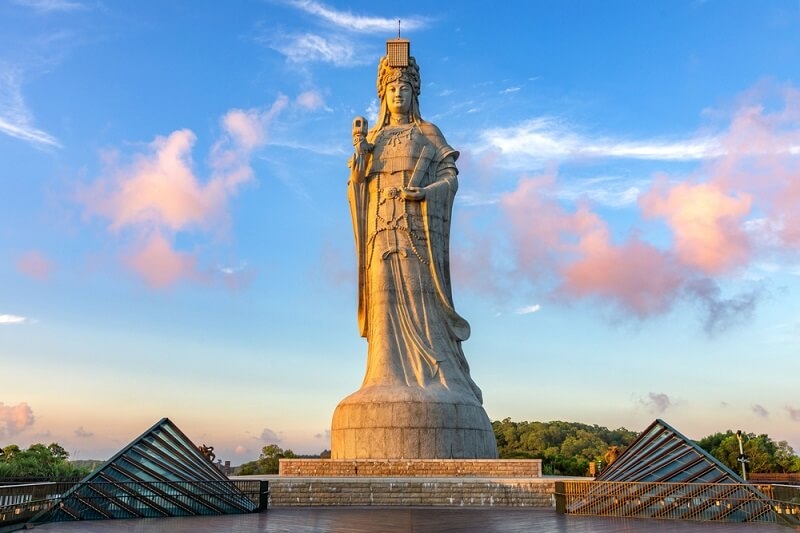
Inanna is a story about one of the most influential characters of the Sumerian mythology that still wins the interest of people nowadays. She is referred to as Queen of Heaven and is mostly remembered due to her theatrical downward and uphill journey. The story of Inanna's resurrection is a story of bravery and change, and survival. Using her story, we can see more clearly how life, death, and rebirth were seen by ancient people.
Inanna was not another goddess in Mesopotamia. The Sumerians had a special place in her heart because they viewed her as Queen of Heaven. She was a symbol of love, beauty, fertility, and also war. This two-sidedness earned her admiration and respect.
The goddess Inanna recurs again and again in other tales as a nurturer and warrior. As much as she was linked with love, passion, and fertility, she could also be used to spearhead warriors. Such a balance erased the existence of the Sumerians, who were reliant on fertility to feed their crops and families, but they also had to protect their territories.
Inanna to the people of Mesopotamia was more than a myth. She was asked to give fertile fields to farmers. Pre-war soldiers were courted by her. Love and marriage were adored by couples. She was everywhere in society, and therefore one of the most significant people in their faith system.
The Descent to the Underworld is one of the most amazing episodes of the story of Inanna. It is a myth that explains how the goddess defied death itself and came back to life. It is among the oldest survival stories of resurrection in the history of mankind.
Inanna chooses to go to the Underworld, where her sister Ereshkigal is in power. She instructs her servant Ninshubur to go and fetch someone before she goes to sleep. This reflects her boldness as well as her intelligence because she understood how dangerous she could have been.
As Inanna entered the Underworld, she had to pass through seven gates. At each gate, she was forced to remove a piece of clothing or jewelry. By the time she reached the throne of Ereshkigal, she was stripped bare. This represented her loss of power and her complete vulnerability.
When Inanna confronted her sister, the judges of the Underworld sentenced her to death. She was struck down and her body was hung on a hook. For three days and three nights, the Queen of Heaven was trapped in the realm of the dead. This moment became a powerful symbol of sacrifice and death in Sumerian mythology.
Also read: The Myth of the Trojan War: Heroes, Legends, and History

The most dramatic part of the myth is the Inanna resurrection. This is where the idea of the Inanna goddess truly shines.
As instructed, Ninshubur asked for help from the gods when Inanna did not come back. After several refusals, the god Enki finally created two beings who went into the Underworld to rescue her. They carried the water and food of life, which revived her.
Through this divine help, Inanna was brought back from death. She rose from the Underworld, but her return came with a cost. The law of the Underworld required someone to take her place. This part of the myth showed the balance between life and death and the sacrifices needed for renewal.
The Inanna resurrection is more than just a myth. It teaches that even the most powerful face struggles, loss, and transformation. Her return symbolizes hope and the possibility of new beginnings after hardship. It reflects courage, rebirth, and renewal.
When we hear that the Inanna goddess returns, it is not just about one character in mythology. It carries deep meanings about human life, challenges, and victories.
Suggested reading: Discover the Hercules Legend: Twelve Labors and Heroic Feats
Inanna’s role in Sumerian mythology was central. She appeared in many myths beyond the descent. Her influence stretched across generations and into other cultures.
As a Mesopotamian goddess, Inanna’s image influenced later deities like Ishtar in Akkadian myths and Aphrodite in Greek traditions. Her blend of love and war shaped how people thought about divine femininity.
There were temples of Inanna in Sumer. She was worshiped by priests and priestesses through rituals, songs, and offerings. These habits kept her in mind and linked the everyday life of people with their faith in the divine.
Myths of Inanna were not entertainment. They were educating about principles of courage, affection, and admiration in the process of life and death. These were told to children by parents and used by leaders to lead society.
Although it has taken thousands of years since the time the Inanna goddess story was told, the story still matters. Her bravery and her renewal inspire people nowadays.
Inanna is regarded by many contemporary readers as an icon of female power. She is presented as being active, bold, and powerful, and not passive. In her story, she speaks to the multifaceted nature of women, making them leaders, lovers, and survivors.
Her downfall and her rise could be thought of as a personal pilgrimage. People can go through difficulties in their lives, just like Inanna experienced loss and was reborn. Her myth serves as a spiritual guide on how to go through difficult moments and emerge as a stronger person when the end is reached.
The coming back of Inanna is still touching people in art, literature, spirituality, and personal reflections. It is the eternal truth of resurrection, balance, and power that keeps her story alive in the modern world.
Explore more: The Legend of Atlantis: Lost Civilization Beneath the Waves
The story of the Inanna goddess reappearing is one of the strongest myths of the ancient Sumerian mythology. She was the Queen of Heaven, and she was strong, passionate, and complex. Her own vulnerability, sacrifice, and renewal are exposed in her Descent to the Underworld and her resurrection as Inanna. It is not only the story of an ancient Mesopotamian goddess, but it is also the story of the human experience. Everyone has difficulties that make us fall, but we can always get back on our feet like Inanna.
This content was created by AI